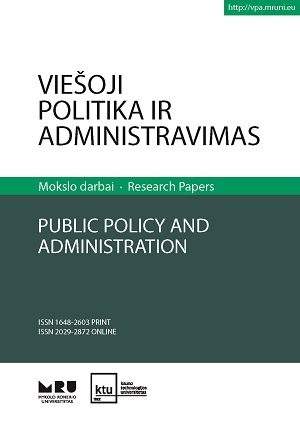Bendruomenės dalyvavimo nepaprastų situacijų valdymo cikle lygių modelis
Model of Levels of Community Participation in the Disaster Management Cycle
Author(s): Arvydas Survila, Andrius StasiukynasSubject(s): Social Sciences, Economy, Civil Society, Public Administration, Sociology
Published by: Mykolas Romeris University
Keywords: disaster management; community participation
Summary/Abstract: Individual, community and public administration institutions responsible for disaster management usually facing various types of threats: natural, technological and willful. Disasters occur due to evidence of threats an their consequences can destroy and damage property, cause cultural, social, economic and psychological effects on society, injure or kill humans, disrupt community activities in different ways. The competent authorities in every phases of the disaster management cycle use certain universally recognized measures in order to reduce the potential impact of disasters, to prepare for responding and to recover after disaster. The effectiveness of application of such measures is determined by one of the existing and widely known in the world approach – community based disaster management. Unfortunately, its application remains an open question how far authorities responsible for disaster management can involve communities into the disaster management cycle activities? Authors of the article on the basis of „public participation levels” classification proposed by Sher r y R. Arnstein (1969) and taking into account restrictions for publicity of existing information on different hazards and management phases provide the theoretical model for community involvement into the disaster management cycle activities.
Journal: Viešoji politika ir administravimas
- Issue Year: 14/2015
- Issue No: 4
- Page Range: 590-603
- Page Count: 14
- Language: Lithuanian

